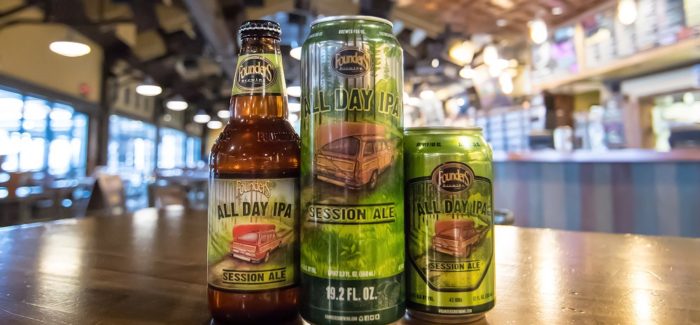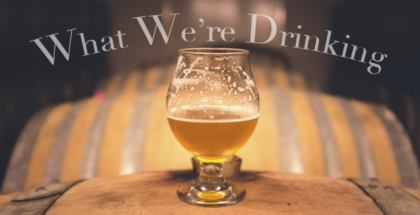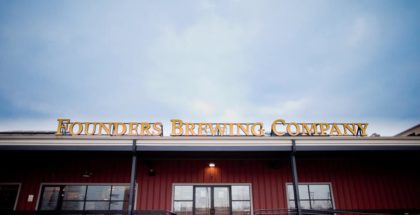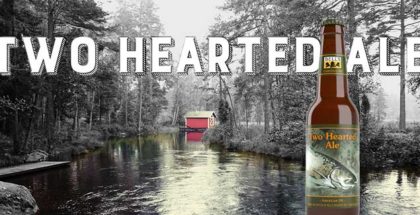The Founders Factor | How All Day IPA Became a National Hit
Founders Brewing has been around for more than 20 years, but they didn’t find their staple beer until 2012. Since its introduction, Founders’ easy-to-drink All Day IPA has been a smash hit. The beer hit a nerve for many people across the U.S. due to its outright drinkability and convenient packaging formats, making it a beer that could be consumed on land, on water, and anywhere in between—and sales have reflected that. Five years since it was released nationwide, All Day IPA just had its most successful year ever, growing an incredible 50.3% in 2017. All Day is now the 3rd best-selling IPA in the nation, an incredible feat for any beer over such a small period of time. The crazy sales numbers of its stalwart beer have lifted Founders to new heights, with volume sales up 51%, but if you ask co-founder Mike Stevens about All Day, he’ll say that the session ale has only begun to reach its potential.
Catching the Session Trend
The creation of All Day IPA was part luck and part genius. According to Mike Stevens, the need for drinkable session ales wasn’t there when they started, as beer in the 90s primarily focused on bold and extreme formats. It took more than 10 years for that to change. Around 2010, Mike noticed that consumer preference had begun to shift towards beers that weren’t as high in alcohol, but instead focused on simplistic and refined flavors that were easy to consume. “As you get older, it gets exhausting drinking those 7-8% beers…you don’t want to give up on flavor, but still want something that comes in under 5% ABV.” This insight led Mike to delve into the realm of session ales. After a couple years of designing, refining and testing, Stevens and co. finally had a beer that perfectly melded bitter hops with a light malt body, concluding with a refreshing crispness and an ABV at only 4.7%. Stevens and co-founder Dave Engbers knew they had a hit with All Day. Put simply: “We basically came up with something that appeals to the everyday drinker in the craft beer space,” said Stevens. And while All Day might not have been the first session IPA, it certainly caught the wave of lighter session beers hitting the market around the same time in 2013, which gave Founders a huge boost. “We got lucky,” said Stevens.
Started canning All Day IPA in 2014 and haven’t looked back since. Happy #BeerCanAppreciationDay!
Thanks to our IG friend @the_craftiest_beer for the photo! pic.twitter.com/DVvb0uz0Qw
— Founders Brewing Co. (@foundersbrewing) January 25, 2018
Canning a Cult Favorite
As many craft brewers know, coming up with an awesome beer is only part of the process. You need to market and package that beer effectively, or your product will got lost among the masses. Yes, it’s true that Founders created a wonderful session IPA, but I personally believe that a lot of its success goes to how Founders marketed the beer, both through its name, and through its packaging formats. Along with being available on tap, All Day can be found in four bottle and can formats. For instance, you can find a 15-pack of All Day cans, 19.2oz’ers for a longer outdoor activity, and 12oz bottles for the craft beer traditionalists. For Stevens, putting All Day in a variety of formats was to appeal to a broader audience who might consume the beer for a variety of occasions. If you’re going canoeing—the 19.2oz format might be the best bet. Going to a tailgate? A 15-pack of 12oz cans will make you a lot of friends. In fact, Stevens noted that the 15-pack can is currently their best-selling format of All Day, as it offers a good price point for the current format of choice (cans) among many craft drinkers.
Along with the gaudy sales numbers, Founders is also able to claim one more title thanks to the success of All Day—becoming the largest brewer in Michigan, which is no small feat given the fervent following of local competitor Bell’s. Stevens says that he still looks up to what Larry Bell and his Kalamazoo brewery have been able to do, and takes pride in the fact that both of these brewing powerhouses reside in Michigan, giving some much needed notoriety to the state among the larger craft beer industry.
Moving Forward
The success of All Day cannot be understated. Since its introduction to the national market in 2013, it has grown sales from $2.5MM to $48.3MM in packaged formats, outselling Goose IPA during the same time period. Even crazier, Stevens says that they have only begun to tap into the potential of All Day, noting that they are only at 50% projected distribution in IRI Total US Grocery —a crazy statistic indeed.
So, what does Stevens attribute the success of the beer to? The answer is as simple as the flavors in the customary green can. “It appeals to the everyday drinker,” while still offering the type of quality and consistency that craft beer fanatics seek out.
Now that Stevens knows he has a hit, Founders plans to go all-in on All Day by focusing on both their on-premise and off-premise chain accounts so that consumers can get more exposure to the beer whether they’re at their local liquor store or pub. At this point, it’s all about execution. Stevens expects that Founders will grow sales upwards of 30% in 2018 thanks in large part to the success of All Day, and the momentum of the beer doesn’t look to plateau anytime soon. All Day has become one of craft beer’s biggest success stories over the past decade, and with Mike Stevens running point, it’s hard to see that success falling off anytime soon.
Feature image courtesy of Founders Brewing.
-
Dear Sir:
I work at Brookshires in Wills Point, TX and we have All Day IPA beer selling for our customers. I have had customers and our cashiers asking what the IPA stands for? I have tried to look at all of your info and I am not seeing any clue. Please help in answering our questions so I can pass along the great news.
-
Hi Catina,
IPA stands for India Pale Ale, which is the more hoppy ale style within the larger Pale ALe category. It is currently one of, if not the most, popular craft beer styles on the market today. Let me know if that helps and thanks for reading.Taylor
-
-
The fresh idea is here). I’ve read the post with great satisfaction and also could know something brand new I will use for my additional requirements.
The guide is bright and clear, with no further useless
facts or else, it reminded me https://michaeltsolomon.com/merit-based-scholarships-no-written-essay/. The language is both
brilliant and vivid, so the more I read,
the more I really do enjoy it! Besides, the information is rather cutting-edge, so just like it.








Comments